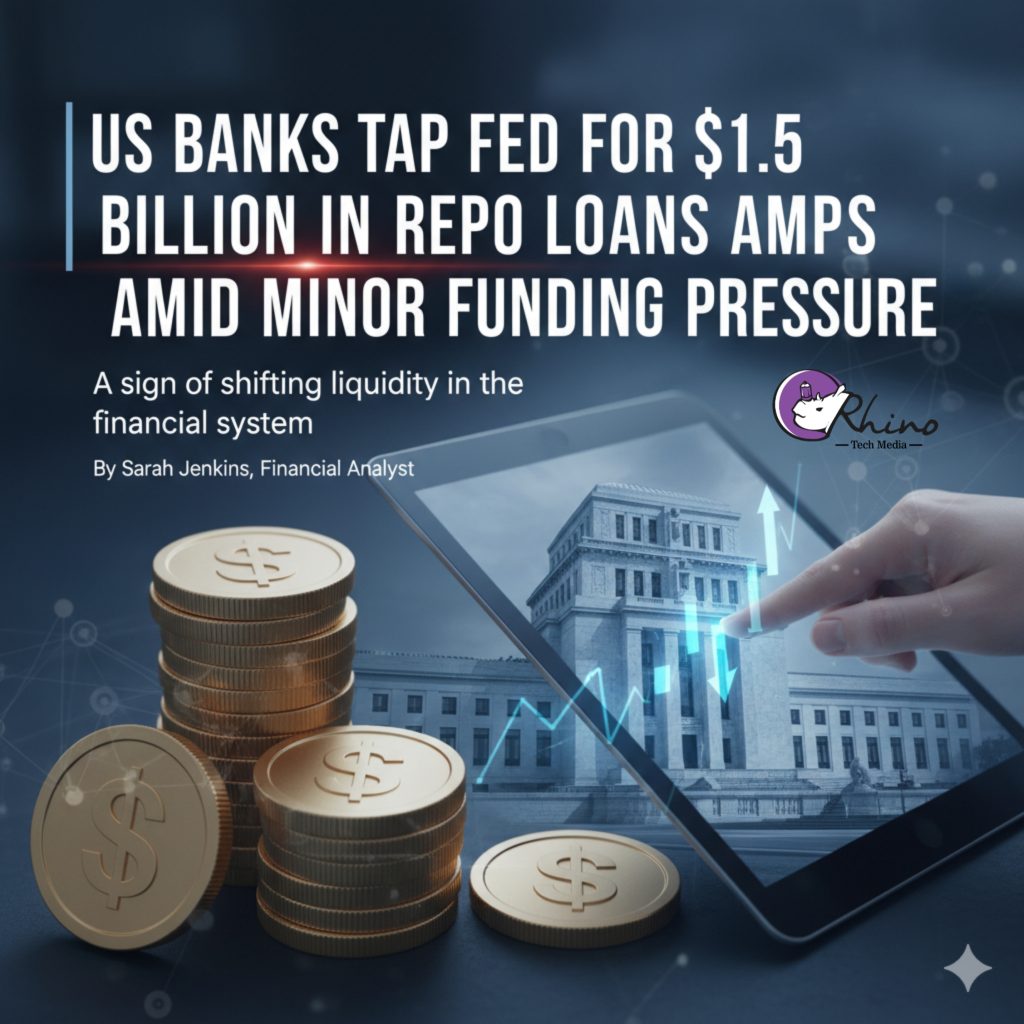Introduction
On September 15, 2025, U.S. banks drew $1.5 billion from the Federal Reserve’s Standing Repo Facility (SRF). This move was interpreted by market watchers as indicating minor funding pressure, largely connected to routine but heavy cash demands such as corporate tax payments and a large Treasury securities settlement.
The event does not suggest a crisis—but it does provide insight into how financial plumbing, liquidity, and short-term funding pressures work in practice. The borrowing occurred at a time when certain payments and obligations coincide, leading to temporary liquidity tightness among banks and other financial institutions.
What is the Standing Repo Facility & Why It Matters
To understand the significance, one must understand:
- The SRF is a facility the Fed uses to provide overnight cash to financial institutions in exchange for high-quality collateral such as U.S. Treasuries.
- It acts as a backstop: when institutions can’t get funding in the private repo market (or prefer not to because of high rates), they can use SRF to meet short-term needs.
- Rates from collateralized overnight borrowing (e.g. repo markets) are anchored by the rate paid by the Fed on Reserve Balances (IORB). When other rates, such as SOFR (Secured Overnight Financing Rate), exceed IORB, it shows demand for funding is tight enough that counter-parties would rather pay up in the private market than settle with the Fed’s reserve rate.
What Led to the $1.5 Billion Draw — The Triggers
The borrowing took place in response to two overlapping cash-draining events:
- Corporate tax deadlines. Corporations generally have large quarterly tax payments due, which pull liquidity out of financial institutions as they settle payments to the Treasury.
- Treasury securities settlement. There was a large settlement of Treasury securities on that date, which similarly requires cash to flow to the Treasury. On the same day, approximately $78 billion in payments to the Treasury were due.
When these events occur, banks may find their reserves temporarily depleted or their liquidity more constrained, bumping up short-term funding costs and pushing them toward central bank facilities like the SRF.
The Evidence of Pressure: SOFR vs IORB
An important metric in assessing funding pressure is the relationship between SOFR and IORB:
- SOFR: the interest rate for secured overnight borrowing using Treasuries as collateral.
- IORB: the interest rate that the Fed pays on reserve balances held by banks.
On that day, SOFR rose to 4.42%, just slightly above the IORB of 4.40%.
That is significant: when SOFR > IORB, banks have an incentive to borrow in private secured markets (repo markets) even if more expensive, instead of simply keeping excess reserves at the Fed. It signals heightened demand for cash that can’t be met purely through reserves or private funding at lower costs.
How Serious Are These Pressures?
While this borrowing is indicative of strain, many analysts see it as modest and transient rather than a sign of systemic funding problems. Key observations:
- The amount borrowed ($1.5 billion) is small, especially relative to some earlier episodes of repo facility usage. For example, at the end of June 2025, borrowing peaked near $11.1 billion on a day with large Treasury coupon payments.
- The pressures are largely seasonal/ calendar driven (tax deadlines, coupon payments etc.), not the result of broader bank liquidity issues or depositor withdrawals.
- There is no indication that excess reserves are drying up in a structural way, or that banks are unable to meet obligations. The facility is functioning as intended: gently cushioning short-term liquidity needs.
Thus, this is best viewed as a normal fluctuation in liquidity demand rather than a warning signal of financial instability.
Implications
Even though this is minor, there are several implications worth noting:
- Interest rate transmission & policy signal
When SOFR exceeds IORB, it suggests that policy rates are being felt, and that the spread between what it costs to borrow (via repo) and what banks earn on reserves is meaningful. This can affect short-term money market rates, influence expectations, and echo into funding costs for other financial entities. - Stress-testing liquidity buffers
Such events test whether banks’ liquidity buffers are sufficient to handle these cash flow episodes. Regular use of the SRF indicates banks anticipate or plan for such pressures; but persistent or growing usage might feed concern. - Treasury and fiscal timing matters
The timing of large Treasury settlements tends to produce these spikes in demand for cash. That underscores how fiscal scheduling has significant spillovers into banking liquidity. - Monitoring for escalation
While this particular case seems mild, repeated episodes or ever-higher borrowings might be early indicators of tighter liquidity, possibly due to policy, regulatory shifts, or underlying stress (e.g. deposit outflows, credit concerns). - Market expectations
Markets may watch such borrowings for clues as to whether funding conditions are tightening more broadly, which could influence bond yields, credit spreads, and bank shares.
Conclusion
The $1.5 billion borrowed by U.S. banks from the Fed’s Standing Repo Facility is best understood not as a sign of acute distress, but as a natural, foreseeable response to unusually large cash demands (tax payments, Treasury settlements) that temporarily strain liquidity in money markets.
While it reflects minor funding pressure, it is not symptomatic of systemic problems—at least not yet. Nevertheless, it offers useful lessons about how central bank facilities function as insurance for liquidity, how short-term interest rates behave under stress, and how fiscal timing interacts with financial intermediation.

